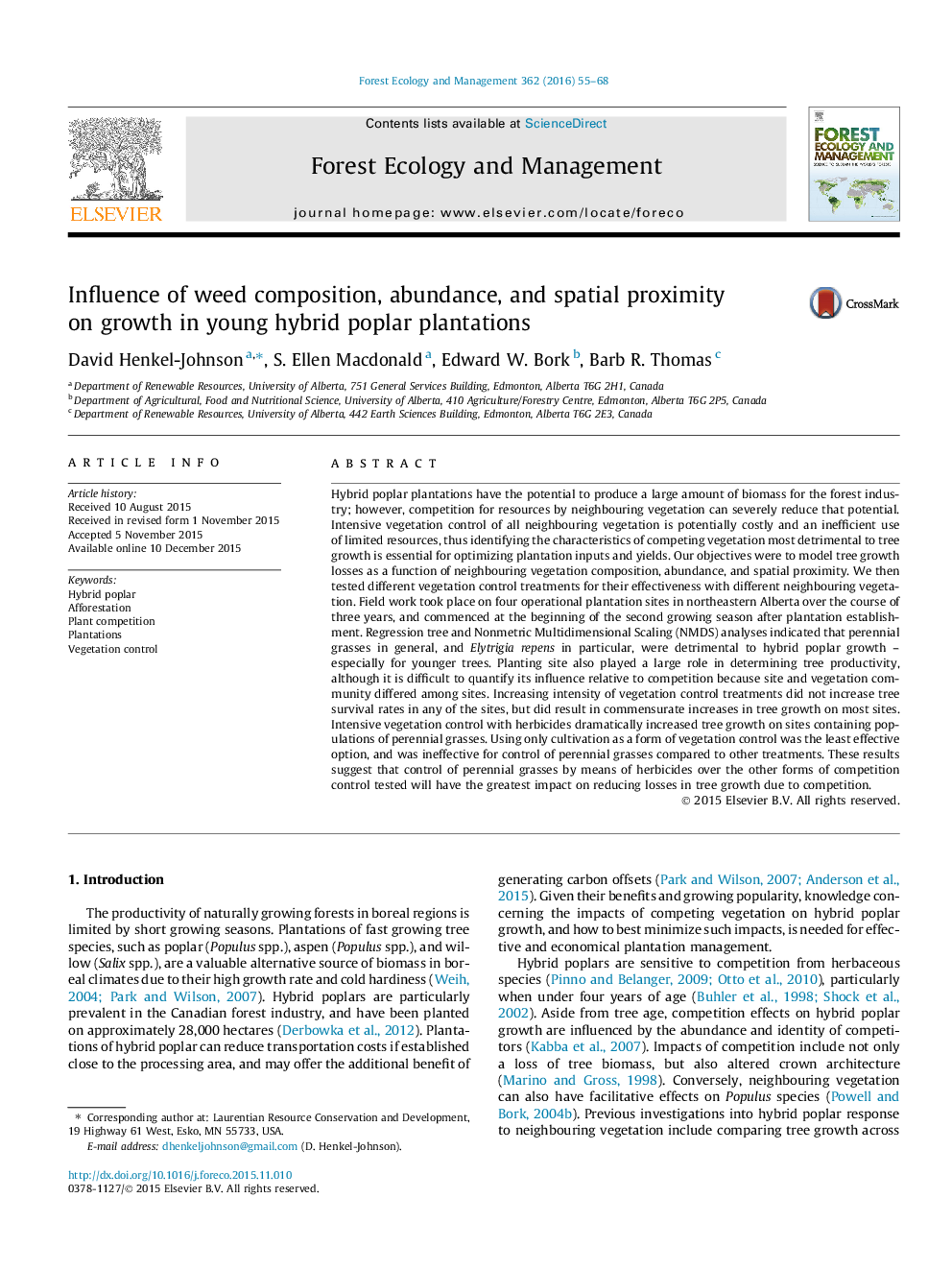| کد مقاله | کد نشریه | سال انتشار | مقاله انگلیسی | نسخه تمام متن |
|---|---|---|---|---|
| 85972 | 159155 | 2016 | 14 صفحه PDF | دانلود رایگان |
• Growth of hybrid poplar plantations was influenced by neighbouring vegetation.
• Perennial grasses had a large negative effect on growth of young poplar trees.
• Elytrigia repens and Cirsium arvense were particularly detrimental to tree growth.
• Inclusion of herbicides with cultivation was important for reducing competition.
Hybrid poplar plantations have the potential to produce a large amount of biomass for the forest industry; however, competition for resources by neighbouring vegetation can severely reduce that potential. Intensive vegetation control of all neighbouring vegetation is potentially costly and an inefficient use of limited resources, thus identifying the characteristics of competing vegetation most detrimental to tree growth is essential for optimizing plantation inputs and yields. Our objectives were to model tree growth losses as a function of neighbouring vegetation composition, abundance, and spatial proximity. We then tested different vegetation control treatments for their effectiveness with different neighbouring vegetation. Field work took place on four operational plantation sites in northeastern Alberta over the course of three years, and commenced at the beginning of the second growing season after plantation establishment. Regression tree and Nonmetric Multidimensional Scaling (NMDS) analyses indicated that perennial grasses in general, and Elytrigia repens in particular, were detrimental to hybrid poplar growth – especially for younger trees. Planting site also played a large role in determining tree productivity, although it is difficult to quantify its influence relative to competition because site and vegetation community differed among sites. Increasing intensity of vegetation control treatments did not increase tree survival rates in any of the sites, but did result in commensurate increases in tree growth on most sites. Intensive vegetation control with herbicides dramatically increased tree growth on sites containing populations of perennial grasses. Using only cultivation as a form of vegetation control was the least effective option, and was ineffective for control of perennial grasses compared to other treatments. These results suggest that control of perennial grasses by means of herbicides over the other forms of competition control tested will have the greatest impact on reducing losses in tree growth due to competition.
Journal: Forest Ecology and Management - Volume 362, 15 February 2016, Pages 55–68
